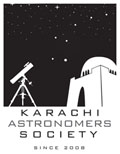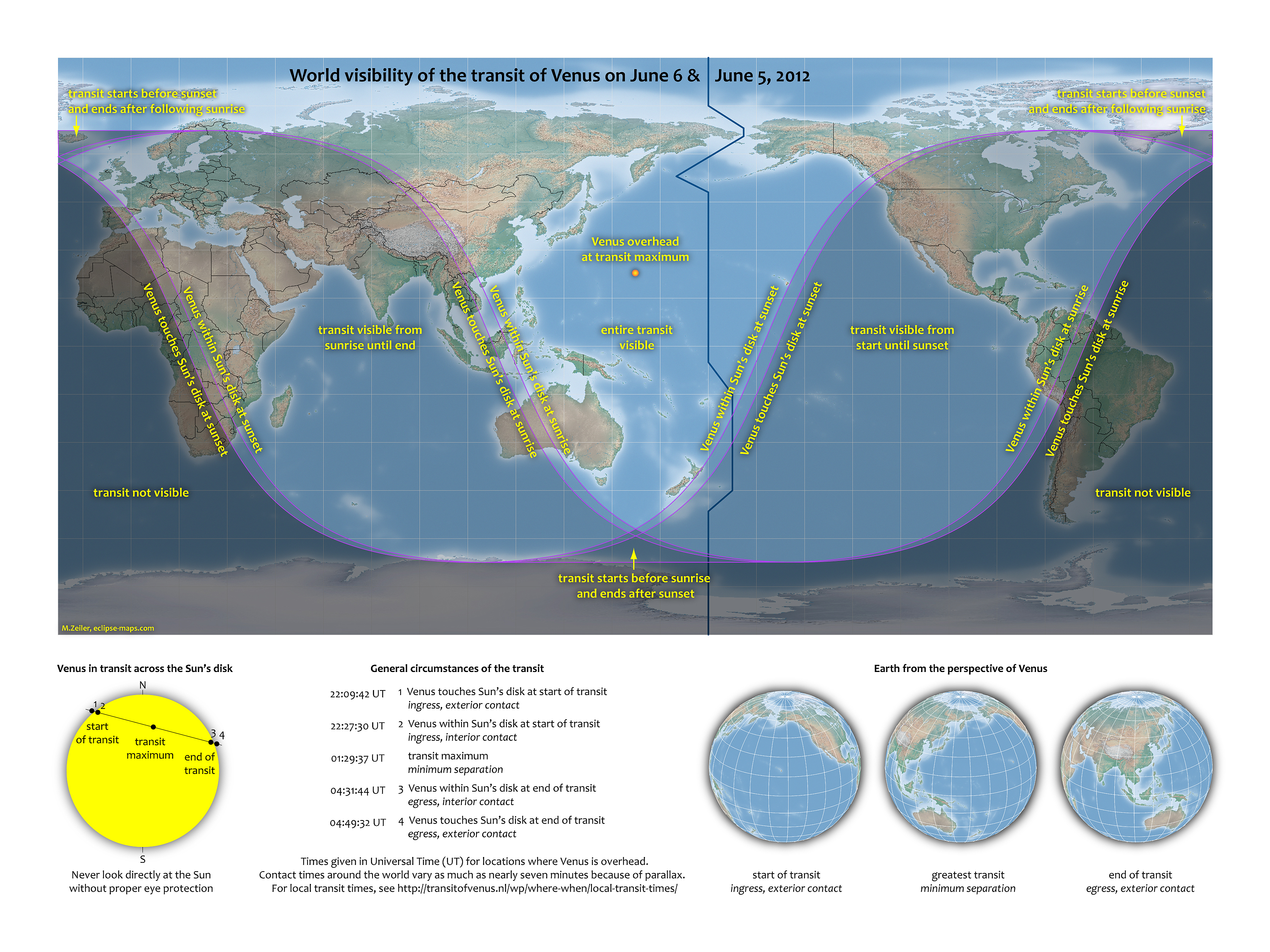The wide expanse of universe always has some secrets in store for humans, some mysteries for individuals to solve, and for humans to witness new phenomena. If you want to witness such a strange phenomenon, which will probably be the first or the second time in the lives of the 80s and 90s people, then you should definitely get up after dawn tomorrow to witness it. Now, what is this unlikely thing, which will occur? Venus, one of the planets of our solar system is visible on the sky many times of the year. However, how would you like to see Venus passing through the face of the Earth? It sounds interesting, doesn’t it? You will find that it is a rare occurrence, and will not be happening for another 100 years. Transit of Venus, as the title puts it, means the transit or passage of a planet across the face of the Sun. Interesting, Transit of Venus only occurs twice in a particular century, and 2012 will mark the second time of its occurrence in the 21st century; 2004 being the first one. However, Transit of Mercury occurs 13 times per century. The 6th of June, 2012 will mark the second time of the Transit of Venus in the 21st century. A transit is quite similar to a solar eclipse, by the moon.
What is Transit ?
“A transit of Venus occurs when the Venus comes between the Sun and the Earth. As a result, the observers on the Earth see Venus in front of the Sun as a Black dot and the Sun in the background. A small portion of equal to the apparent size of the Venus is obscured.”
Transit of Venus 2004
The Transits of Venus can either occur in June or December, as known currently. When it was witnessed the first time in 2004, the world was quite excited, because it was the first Transit, which occurred after the invention of broadcast media. It took place on June 8, 2004, and it was the first one, witnessed after December 6, 1882. The transit lasted around six hours. Venus travels slowly across the face of the Earth, and it seems smaller, as well. The transit was visible from Europe, most of Asia and almost all parts of Africa. Western North America, southern South America, Hawaii and New Zealand were not able to witness the event.
Do you want to witness the strange celestial event now?
Visibility from different parts of world
You can witness and be part of this amazing and rare occurrence, if you live anywhere in the Western Pacific, Easter Asia and Eastern Australia. If you live in North and Central America, and the northern part of South America, you will be able to witness only the starting of the transit. Before you can witness the entire event (those belonging to the American part of the world), the sun will set. As far as Europe, Western and Central Asia, Eastern Africa and Western Australia are concerned, individuals living in these areas will only see the end of the transit, because the sun will already be rising from these locations. Western African and the lower part of Southern America will not be able to witness this strange celestial phenomenon. The below chart shows the regions of the world where the transit will be visible. If you cannot see the picture clearly, click on the picture to view it larger.
World visibility map for June 5-6, 2012 Venus Transit.
(Source: Nasa.gov, Credit: M. Zeiler)
What will happen in the Transit of Venus 6th June 2012?
The planet Venus will be visible on the face of the Sun, as a small, dark disk. The timings of the transit are 22:09 UTC on 5th June 2012, and it will finish on 04:49 UTC on 6th June, 2012 (Here you can add Pakistan time, as well). People will be able to observe this event happening for less than or more than seven minutes, according to their position. In Karachi and nearby regions, the Sun will rise at around 05:52am with Venus transiting it. The transit will finish at around 09: 50am when the Venus will leave Sun. The next transit will occur in 2117 and 2125. Hence, this is a long time, and therefore, if you want to witness it, then you should definitely make sure that you see it this time!
Can we see the Transit ?
First thing, one should never look at the Sun directly with Naked Eye, Binoculars or a telescope. Then, how to see the transit? There are solar filters that are placed on top of the objective lens of Telescope. There are special equipment called Solar Telescope that shows other features of Sun such as prominences, flares etc.
How do you see it?
Do not try watching the sky, while Venus is in transit with naked eye, because the UV rays from the Sun can damage or destroy retinal cells, which can lead to temporary and even permanent blindness. The safe way to watch this strange event is to observe an image of the sun, on the screen, through different observation equipment, which includes binoculars, pinhole, reflected pinhole and a telescope. You may use filters, which are particularly designed for such events, such as astronomical solar filter, or even eclipse viewing glasses. However, you should not be disappointed if you do not see much, because the disk of the Venus is quite small, especially if compared to the Sun. There are other techniques to observe the transit that includes Solar Projection on a white surface, solar projection on Screen through a camera. It depends on the observer what he is equipped with.
Conclusion
Don’t miss out this once/twice in a life time opportunity. If you don’t have any equipment, find an Astronomy group/club near you and get the most out of the event. Check out the timing in your country, and go for it! Become part of history, when you witness this phenomenon.
Finally Karachi Astronomers Society did it! – Observation of Transit of Venus from KaAStrodome, Karachi, Pakistan
Finally the 6th of June 2012 arrived and we had a morning with venus in front of the Sun.. Yes… You got it right.. The Venus Transit was underway when we saw the Sun just after the Sun rise and had gained a reasonable altitude. It was cloudy and hazy, hence providing natural filter. And KaAS participants at the KaAStrodome were welcomed by Naked-Eye view as they stepped in the KaAStrodome at around 6:30AM. Venus could be seen as a dot in the picture below. This is how it was looking with the naked-eye. :)
Amazing Views
The hosts of the KaAStrodome had already seen the transit by the time I reached along with other 2 KaAS members. They had already set up the Telescopes and Laptops enjoying the pictures from Tasmania, Australia. The observation had started as we kept looking Venus and the Sun with the natural filter haze. :) We were quite amazed by this natural filter. Within 1 hour, some other KaASian folks reached KaAStrodome and we told them about the phenomenon and how to observe it. Everyone was happy to see once in a life time opportunity.
The Observation
After a while, we set up Ebrahim’s Nikon Binoculars 10×50 with the Solar filter on it and we were able to observe something similar to the photo below. Venus is shown as a dot on the upper left side.
Observing transit with Image Projection
We not only used the Advanced method, but we also observed it with the pin hole technique and image projection technique. The projection technique is quite easy and safe. One has to point the telescope or a Binoculars towards the Sun while removing the eye-piece of the scope. In front of the eye-piece, you put a paper or a white card. Once you focus the scope and the image is sharp, you will see the projected image on the paper. You can safely see it. :) capture it. Love it. Show it. Here how it looks. See in the below picture.. You will see the image upside-down.. this is because now the light is coming from the telescope which inverts the image. This is almost the end of the transit. If you look closely in the picture below, you might be able to see 3 sun spots arranged in a triangular position.
The live view was simply amazing. :) so we can’t compare it with the pictures. While we were observing the transit with the Binoculars, Mr. Ayaz Hussain was busy with observation through KaAS’s MCT and setting up the camera with the telescope. A very enthusiast lady came there with his son (who came from USA) from one corner of the city. She got to know about KaAS at our last event at Alliance Fracaise de Karachi. We explained them the basics and observation techniques along with the observation.
The Radio FM 105 guy came and he took the interview from one of the senior members of KaAS Muhammad Mehdi Hussain. Mr. Mehdi Hussain told the public the transit, its significance in Astronomy, and for general public. He told about KaAS activities, and its aims and objective and the purpose of organizing the free viewing at KaAStrodome for general public.
We had around 20 Astronomy exteme enthusiasts with us at KaAStrodome. Even a family came there with their children in uniforms.. they were going to School… :) Poor kids. School in June. It should be a public holiday on this occasion.. :p
The observation went just perfect with proper observation, information sharing, pictures, coverage and a happy smiling face from the participants.
Highlights of Venus Transit from KaAStrodome, Karachi, Pakistan
About the Author
The author Abubaker Siddiq Shekhani is a 24-year old amateur Astronomer obsessed by Moon since childhood. He is a Software Engineer by profession and loves to do adventures, travelling, observing nature and loves nature. This particular article is his one of the longest article among his other articles. He has written this article for the general public, beginners, amateur astronomers and for those who are not aware of Transit of Venus but have questions in their minds about the science behind it.
Other Articles by Author
Total Lunar Eclipse of 10th of Dec from Pakistan
Moon Halo in Karachi: Nov 28 2009
SECRET DIMENSIONS OF OUR SKIES … most of Pakistanis have never seen !!







